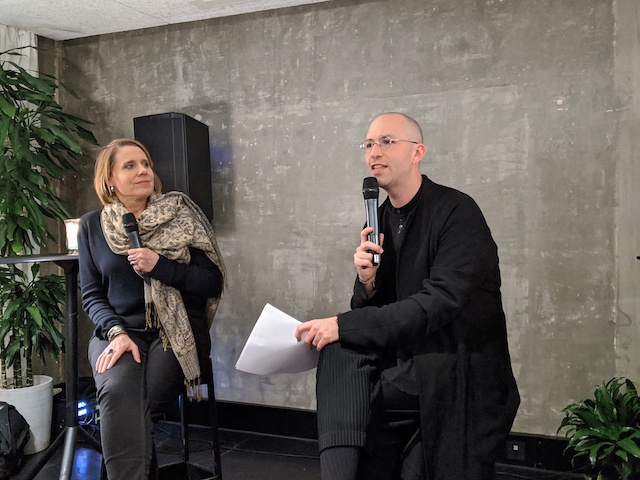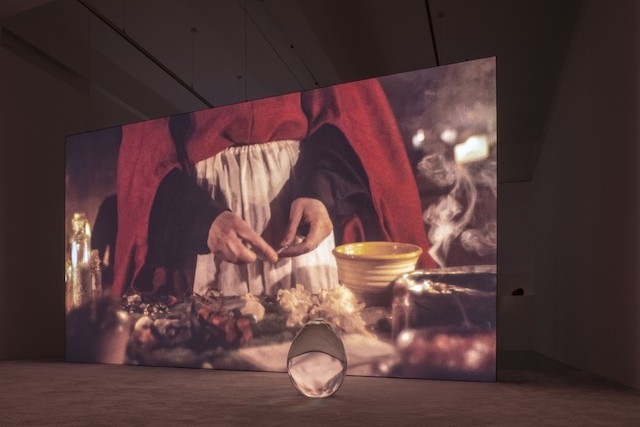‘With the fingertip of the fourth (ring) finger of your left hand touch a leaf or bloom – or something living – and with the fingertip of the same finger of the other hand touch the bone of your heart.’ It’s a dark Thursday night in bleak late January and I’ve been walking around central London for three hours in subarctic rain and wind. I’m searching for a slim black volume entitled Ignota Diary 2020 which, according to its publisher’s website, contains a how-to guide for setting up your own everyday witchcraft practice. Readers of the diary are promised ‘a full astrological navigation, a birth chart, keys to the planets, houses, symbols, retrogrades, lunar phases, along with instructions for seasonal rituals, psychedelic journeys, and a global map of sacred transformative pilgrimage sites’. All things I’ve been told I could benefit from. Calling in succession at Housmans Radical Booksellers (Kings Cross), Waterstones (Gower Street), Treadwell’s Books (Bloomsbury), London Review of Books (Holborn), Foyles (Charring Cross Road), and finally Watkin’s Books in Covent Garden, I’m disappointed at every turn. The Ignota Diary, it would appear, has vanished.
I was hoping that the diary would help me to decipher my experience, the previous Monday, in a concrete meeting room at the Ace Hotel in the heart of Shoreditch, London’s fashion, design and technology district. I’d attended an event on ‘everyday witchcraft’ hosted by the diary’s editors Ben Vickers and Sarah Shin at which I found myself amongst a group of approximately 30 millennials, all of whom seemed to know each other and, somewhat surprisingly, quite a lot about witchcraft. The founder of the esoteric bookshop Treadwell’s and its ‘presiding spirit’, Christina Oakley Harrington, had been invited to offer expert advice on how mystic and occult practices can support your daily life, offering opportunities for the optimisation of holistic health and well-being.
Amongst the topics covered by Oakley Harrington were: how to make witchcraft altars in cramped London living spaces (windowsills are best); finding and joining a coven (it’s a lot easier since the internet); the pros and cons of group work (find a magic group that’s ‘hard to join and easy to leave’ is her advice); the definitive Tarot (the Rider-Waite deck designed by American illustrator Pamela Colman Smith); and recommended city pilgrimages (the burial place of Celtic warrior Queen Boudicca, for example, which is either beneath a mound on Hampstead Heath or between platforms 9 and 10 at King’s Cross station – which is also to say, where Harry Potter catches the train to Hogwarts).

The audience at the Ace Hotel is part of a generation for whom concepts of astrology, magic and mysticism are commonplace rather than kooky. A recent piece by Christine Smallwood in The New Yorker highlighted that almost 30 percent of Americans believe in astrology and are spending $2.2 billion annually on ‘mystical services’ such as palmistry and tarot reading, much of it through a burgeoning social media and app economy. “So, why this resurgence of interest in astrology, witchcraft and the occult?” I ask Vickers, “and what’s different about this moment from those that preceded it, like the magical renaissance that occurred in the 1970s, for example?” The difference for Vickers, who is cofounder of the mystical press Ignota Books as well as Chief Technology Officer at Serpentine Galleries, is the urgency attached to his generation’s quest for answers and meaning. “When you read about the 60s and 70s, it feels like a cultural movement, like punk” he says, but with the very real threat of climate catastrophe and the rise of fascism, witchcraft, he argues, provides a “tool kit” to express a shared “shift in consciousness” and creates a sense of community.
Much of the community to which Vickers refers is being built online. Shin – who tweets as Space Crone – is part of an expanding body of technofeminists for whom the witch is a central figure. Historically, the witch was someone who possessed power outside of the established, patriarchal order, so it’s not surprising that technofeminists should re-activate and repurpose the figure for an online community that celebrates difference and includes trans, non-binary and queer activists among its members.
My three-hour search for the sold-out Ignota Diary was partly a result of everyone I met wanting to share their opinion on this newfound interest in witchcraft. According to the bookseller in Watkins, the trend represents a microcosm of the factionalism we’re experiencing in Western society. Surrounded by crystals and sage, he delivered a surprisingly sceptical take on the whole phenomenon before attributing it to the fact that millennials grew up in Scorpio with Pluto rising and thus, according to his astrological take, feel betrayed and don’t trust authority. The post-millennial generation now coming of age, he argued, are less concerned with mystical introspection than political activism around issues such as climate disaster.
I’m happy to say I did eventually find the Ignota Diary and have begun to explore its pages, including the ‘Ritual for Spring’ I quoted at the beginning of this piece. Unable to find the occult book in the world of things, I ordered it online.
Online exclusive published on 5 February 2020
